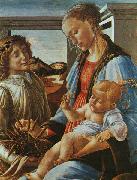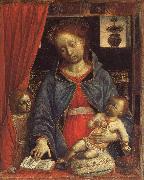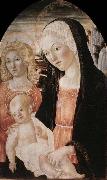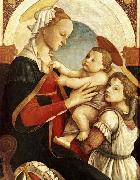Wholesale Oil Painting No Minimum |
|||||||||||
|
|
|||||||||||

|
|||||||||||
|
|
|
||||||||
Sandro BotticelliItalian Early Renaissance Painter, 1445-1510 Italian painter and draughtsman. In his lifetime he was one of the most esteemed painters in Italy, enjoying the patronage of the leading families of Florence, in particular the Medici and their banking clients. He was summoned to take part in the decoration of the Sistine Chapel in Rome, was highly commended by diplomatic agents to Ludovico Sforza in Milan and Isabella d Este in Mantua and also received enthusiastic praise from the famous mathematician Luca Pacioli and the humanist poet Ugolino Verino. By the time of his death, however, Botticelli s reputation was already waning. He was overshadowed first by the advent of what Vasari called the maniera devota, a new style by Perugino, Francesco Francia and the young Raphael, whose new and humanly affective sentiment, infused atmospheric effects and sweet colourism took Italy by storm; he was then eclipsed with the establishment immediately afterwards of the High Renaissance style, which Vasari called the modern manner, in the paintings of Michelangelo and the mature works of Raphael in the Vatican. From that time his name virtually disappeared until the reassessment of his reputation that gathered momentum in the 1890s |
||||||||
|
|
||||||||
Madonna and Child with an Angel
Madonna and Child with an Angel Painting ID:: 134 |
Isabella Stewart Gardner Museum, Boston Isabella Stewart Gardner Museum, Boston |
|||||||
|
|
||||||||
FOPPA, VincenzoItalian Early Renaissance Painter, ca.1430-1515 was a Northern-Italian Renaissance painter. He was an elderly contemporary of Leonardo da Vinci. Born at Bagnolo Mella, near Brescia in the Republic of Venice, he settled in Pavia around 1456, serving the dukes of Milan and emerging as one of the most prominent Lombard painters. Foppa returned to Brescia in 1489. His style shows affinities to Andrea del Castagno and Carlo Crivelli. Vasari claimed he had trained in Padua, where he may have been strongly influenced by Mantegna. During his lifetime, he was highly acclaimed, especially for his skill in perspective and foreshortening. His important works include a fresco in the Brera Gallery of Milan, the Martyrdom of St. Sebastian, and a Crucifixion (1435) in the Accademia Carrara of Bergamo. Many of his works have been lost. He was influential in the styles of Vincenzo Civerchio and Girolamo Romanino. |
||||||||
|
|
||||||||
|
|
Madonna and Child with an Angel
Madonna and Child with an Angel Painting ID:: 29795 |
mk67
Tempera on panel
16 1/8/x12 13/16in
Uffizi,Gallery
mk67 Tempera on panel 16 1/8/x12 13/16in Uffizi,Gallery |
||||||
|
|
||||||||
Francesco di Giorgio MartiniItalian Early Renaissance Painter and Sculptor, 1439-ca.1501 was an Italian painter of the Sienese School, a sculptor, an architect and theorist, and a military engineer who built almost seventy fortifications for the Duke of Urbino. Born in Siena, he apprenticed as a painter with Vecchietta. In panels painted for cassoni he departed from the traditional representations of joyful wedding processions in frieze-like formulas to express visions of ideal, symmetrical, vast and all but empty urban spaces rendered in perspective. Francesco di Giorgio is also known for architectural designs and sculptural work for Federico III da Montefeltro, Duke of Urbino, for whom he built star-shaped fortifications. He composed an architectural treatise Trattato di architettura, ingegneria e arte militare that he worked on for decades and finished sometime after 1482; |
||||||||
|
|
||||||||
|
|
Madonna and Child with an Angel
Madonna and Child with an Angel Painting ID:: 52258 |
c. 1471 Panel, 74 x 49 cm c. 1471 Panel, 74 x 49 cm |
||||||
|
|
||||||||
Sandro BotticelliItalian Early Renaissance Painter, 1445-1510 Italian painter and draughtsman. In his lifetime he was one of the most esteemed painters in Italy, enjoying the patronage of the leading families of Florence, in particular the Medici and their banking clients. He was summoned to take part in the decoration of the Sistine Chapel in Rome, was highly commended by diplomatic agents to Ludovico Sforza in Milan and Isabella d Este in Mantua and also received enthusiastic praise from the famous mathematician Luca Pacioli and the humanist poet Ugolino Verino. By the time of his death, however, Botticelli s reputation was already waning. He was overshadowed first by the advent of what Vasari called the maniera devota, a new style by Perugino, Francesco Francia and the young Raphael, whose new and humanly affective sentiment, infused atmospheric effects and sweet colourism took Italy by storm; he was then eclipsed with the establishment immediately afterwards of the High Renaissance style, which Vasari called the modern manner, in the paintings of Michelangelo and the mature works of Raphael in the Vatican. From that time his name virtually disappeared until the reassessment of his reputation that gathered momentum in the 1890s |
||||||||
|
|
||||||||
|
|
Madonna and Child with an Angel
Madonna and Child with an Angel Painting ID:: 62396 |
1465-67 Tempera on panel, 87 x 60 cm Spedale degli Innocenti, Florence It is possible that this somewhat awkward painting of the Madonna was produced while Botticelli was still working in the workshop of his teacher, Filippo Lippi. The initial inspiration for the painting came from the latter's famous Madonna in the Uffizi. Botticelli replaced the landscape with an arched architecture which frames the heads of the mother and child and emphasizes the two main figures as the centre of the devotional scene 1465-67 Tempera on panel, 87 x 60 cm Spedale degli Innocenti, Florence It is possible that this somewhat awkward painting of the Madonna was produced while Botticelli was still working in the workshop of his teacher, Filippo Lippi. The initial inspiration for the painting came from the latter's famous Madonna in the Uffizi. Botticelli replaced the landscape with an arched architecture which frames the heads of the mother and child and emphasizes the two main figures as the centre of the devotional scene |
||||||
|
|
||||||||
|
Sandro Botticelli Italian Early Renaissance Painter, 1445-1510 Italian painter and draughtsman. In his lifetime he was one of the most esteemed painters in Italy, enjoying the patronage of the leading families of Florence, in particular the Medici and their banking clients. He was summoned to take part in the decoration of the Sistine Chapel in Rome, was highly commended by diplomatic agents to Ludovico Sforza in Milan and Isabella d Este in Mantua and also received enthusiastic praise from the famous mathematician Luca Pacioli and the humanist poet Ugolino Verino. By the time of his death, however, Botticelli s reputation was already waning. He was overshadowed first by the advent of what Vasari called the maniera devota, a new style by Perugino, Francesco Francia and the young Raphael, whose new and humanly affective sentiment, infused atmospheric effects and sweet colourism took Italy by storm; he was then eclipsed with the establishment immediately afterwards of the High Renaissance style, which Vasari called the modern manner, in the paintings of Michelangelo and the mature works of Raphael in the Vatican. From that time his name virtually disappeared until the reassessment of his reputation that gathered momentum in the 1890s Madonna and Child with an Angel 1465-67 Tempera on panel, 87 x 60 cm Spedale degli Innocenti, Florence It is possible that this somewhat awkward painting of the Madonna was produced while Botticelli was still working in the workshop of his teacher, Filippo Lippi. The initial inspiration for the painting came from the latter's famous Madonna in the Uffizi. Botticelli replaced the landscape with an arched architecture which frames the heads of the mother and child and emphasizes the two main figures as the centre of the devotional scene |
||||||||
|
|
||||||||
|
Prev Next
|
||||||||
|
|
||||||||
|
Related Paintings to Sandro Botticelli :. |
||||||||
|
|
||||||||
|
CONTACT US |




